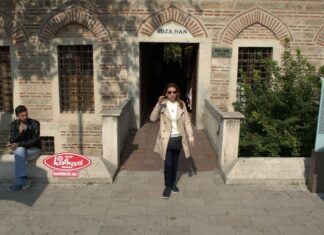Athalaric, the grandchild of Theoderic by Eutharic and Amalasuntha, was the new king in all but fact. His widowed mother was the effective regent of the state, relying on a cadre of civilian and military officials already at court. We are less well equipped with any narrative of affairs during her regency than for adjacent periods, but it appears to have been mainly stable and a continuation of what had been known under Theoderic. From 526 to 534, the Theoderician era continued without the man who had made it. The terminology of civilitas returned to the royal documents after a few years in abeyance, but was addressed only to civilians, not the army. A Gothic name, Tuluin, appears on the list of senators, while in roughly the same years the Roman name Cyprian belongs to a father whose children were educated to the language and ways of the army.
About Amalasuntha’s son
Disaster loomed. We should not trust the standard story about Amalasuntha’s son and his end, yet we must tell it. Amalasuntha, we are told, put the boy in the care of three grave, prudent older Goths, but others were unhappy and “because of their eagerness to wrong their subjects, they wished to be ruled by him more after the barbarian fashion.” A dialogue, surely made up long after, recounts how Amalasuntha defended her style of educating her son against Gothic critics, who succeeded in taking control of the boy and giving him over to companions who “as soon as he came of age, enticed him to drunkenness and to intercourse with women, making him an exceptionally depraved youth, and of such stupid folly that he was disinclined to follow his mother’s advice.”34 He plunged in short order into the depths of a wasting disease and died on October 10, 534, still a teenager coastal bulgaria holidays.
This moralizing reading appears twenty years later, from the skepti¬cal historian Procopius of Constantinople, and he burdens it with several overlays. It shows the Italian regime to disadvantage while preparing us for the claim that the barbarian regime was deteriorating and thus appropriately an object of military intervention from outside. The cartoonish barbarians who sent Athalaric to his grave with wine, women, and song are what one would expect in such a story, but these caricatures bear no resemblance to any Italian reality we know of. There were surely differences of opinion within the Italian court, and the young king could well have been a political football between factions, with his death an opportunity for blaming and posturing on all sides. The division is unlikely to have been between Roman and Goth; rather, it would have been between civilian and military, with the advocates of a strong defense seizing control of the young man’s future.
Think of Boethius?
One short note: What should we think of Boethius? The fame of his popularized version of Plato in the Consolation in later centuries is real and his book stands on its merits. Its encouragement of quiet withdrawal from public life is in tune with a culture that would eschew ambition and wealth—at least in principle—but the message is at the very least controversial and worth controverting. Boethius’s actions and his career make sense in their place and time. If he grasped at the brass ring, missed, and then paid for his attempt with his life, he was no more and no less than a typical Roman aristocrat of any age and can scarcely be judged otherwise than as having misjudged his moment. Would Justinian have been happier to have Boethius in command in Italy than Theoderic’s heirs? Would Italy and later history have been spared some of Justinian’s mad restorationism ? The effort Boethius made, if it makes him out to be less an otherworldly philosopher than we have thought, might not have been so ill-advised as first appears Theoderic or Boethius saw.
Theoderic’s death offers
Theoderic’s death offers an opportunity to take a deep breath and look around the Mediterranean at the state of the Roman empire in the year 526. This is arguably the last moment of genuinely ancient history when it makes sense to take collective stock like this, when the totality of what Rome created could still be thought of as one community.
The government that had begun doing business on seven hills in the Tiber valley in 753 BCE (the legendary date of Romulus’s founding of the city) or 509 BCE (the traditional date of the founding of the republic) was still fully alive and well and collecting taxes. It had moved its corporate headquarters to Constantinople almost exactly 200 years earlier, and flourished as a result. Two hundred years is a long time. At a distance of 1,500 years, many people, places, and events seem crowded close together by a foreshortening of the historical time line, but Constantine and his epochal changes (founding Constantinople, privileging Christianity) were as far in the past then as Napoleon and Thomas Jefferson are from us today.








